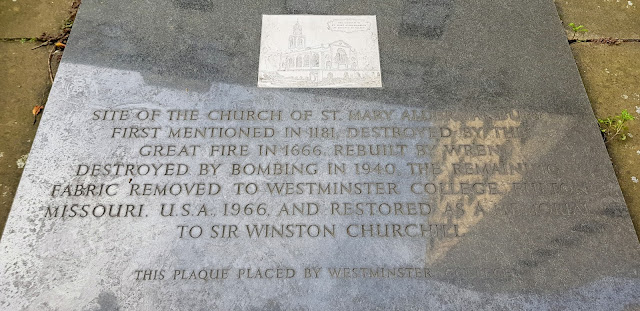 |
| The remains of St Mary Aldermanbury church. |
Thursday October 29, 2020
Meandering my way through Holborn on my way toward Euston station, I passed by the remains of St Mary Aldermanbury church, which is situated beside the City of London Police HQ.
Considering its location within the City of London, it is a tranquil place to sit and relax. The footprint of the church is all that remains, with trees and shrubs having been planted to bring the area to life.
Benches are placed around a small square, so that you can relax and soak up the atmosphere.
Although only parts of the walls remain, the church lives on... across the Atlantic Ocean.
Brief History
St Mary the Virgin Aldermanbury church had stood on this site since, at least, 1181, but was destroyed in the Great Fire of 1666.
Sir Christopher Wren rebuilt the church with Portland Stone, with work beginning in 1672. It was the ninth of over 50 churches to be rebuilt by Wren.
'Hanging' Judge Jeffreys was interred here, in a vault beneath the communion table, in 1688.
The church was hit by an incendiary bomb, on December 29, 1940, which only left the walls, columns and bell tower standing.
In 1965 the church was demolished and the stones transported to Fulton Missouri, USA, where it was rebuilt in the grounds of Westminster College, as a memorial to Sir Winston Churchill. Churchill had given a speech at the college, in 1946. The foundation stone was laid in October 1966, 300 years after the Great Fire of London.
Westminster College added a plaque to the footprint of the church, in London.
 |
| The Plaque placed by Westminster College. |
The remains became Grade II Listed in 1972.
 |
| Monument to John Heminge and Henry Condell. |
Lovely
ReplyDeleteThank you
Delete